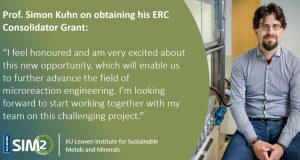— Alessio Zuliani, University of Cordoba
One of the most captivating reply to the challenge for substituting fossil sources, is the employment of renewable bioresources through new sustainable processes.1 Truthfully the exploitation of biomass can potentially satisfy a variety of needs, including generating electricity, heating homes, fueling vehicles and provide raw materials.
Until the middle of 20th century, many industrial materials such as solvents, dyes and synthetic fibers were made from trees and agricultural crops.1 Indeed, besides food provision, our history and civilizations are fulfill of interesting examples of biomaterials productions; e.g. more than 2500 years ago, the Phoenicians were able sellers of the tyrian purple, a dye naturally extracted from the secretions of the sea snail muricidae.2
By the late 1960s, many bio-based chemical products had been displaced by petroleum derivatives which allowed to overpass the difficulties of the exploitation of renewable biomass, such as low sources quantities or high production price.3 However, a renewed interest in the synthesis of fuels and materials from bioresources arose already during the 1970s petroleum crisis.4
At the present, the societal growth is pushed both by economical and ethical issues, focusing on the meaningful aim of a greener future for the next generations.
In 1998 Anastas and Warner define the twelve principles of the green chemistry.5 The principles state the outline for minimize the environmental and health impact of a chemical process. The entrepreneurship translation of the twelve principle is the so-called biorefinery, defined by International Energy Agency task 42 as a facility that integrate biomass sustainable conversion and equipment to produce power, heat, and chemicals from biomass.6
It may sound strange but also the concept of biorefinery is old. E.g., during the Roman Empire, the human urine was used to produce the ammonia for the tanning of the leather. In addition, the Emperor Vespasian imposed a tax to whom didn’t used public bath as some urine could get lost with the precious ammonia – from where it comes the famous pecunia no olet (transl. urine could have a bad smell, but money doesn’t). In that way a biorefinery simultaneously solves two problems, the waste disposal and the provision of raw materials. Similarly, nowadays in many countries biogas is produced from municipal solid wastes or from farm manure, solving the problem of the waste disposal, and producing gas that can be upgraded in the line.7
The biomass conversion of starch, sucrose and vegetable oils to bioproducts have been operating well since years. Million tons per year of corn, wheat, and potato starch have been processed to produce different products. Cognis Company (owned from 2010 by BASF) produced hundreds of different wellness, nutritional and functional products from vegetable oil. Roquette Company converts 6 M tons per year of starch to produce over 700 different products. Lots of startups are developing products produced via innovative processes involving microalgae or sea weeds.8
COSMIC Project, the European Training Network for Continuous Sonication and Microwave Reactors, aims to develop new technologies for all kind of industries. Specifically, process intensification, microwave and ultrasounds applications could track green, environmentally friendly and affordable techniques.
Currently, I’m part of Prof.Rafael Luque’s group (NANOVAL) at the University of Cordoba (Spain), which has several years experiences in biomass and waste valorization, nanochemistry and catalysis. The precious sharing of informations between COSMIC and NANOVAL colleagues could yield to really interesting and attractive results in new microwave/ultrasound biorefinery technologies.
Who knows, maybe in the future we will see new advanced biorefinery industries (and thanks God, some already exist) completely surrounded by biochemicals sources, therefore fields and trees. For sure it could be a nice scenario and a nice place to live…. game is on!
(For other information on waste valorization check Prof.Rafael Luque’s group website: https://www.uco.es/~q62alsor/index.html )
- Ragauskas AJ, Williams CK, Davison BH, et al. The Path Forward for Biofuels and Biomaterials. Science. 2006;311(5760):484-489.
- Ziderman II. Purple Dyes Made from Shellfish in Antiquity. Review of Progress in Coloration and Related Topics. 1986;16(1):46–52.
- Biotechnology and the utilization of biowaste as a resource for bioproduct development. Trends in Biotechnology. 2001;19(5):172 – 177.
- Wyk JPv. Biotechnology and the utilization of biowaste as a resource for bioproduct development. In:2001.
- Anastas PT, Warner JC. Green chemistry : theory and practice. Oxford England ; New York: Oxford University Press; 1998.
- Jungmeier G, Van Ree R, de Jong E, et al. FACTS, FIGURES AND INTEGRATION OF BIOREFINERIES IN A FUTURE BIOECONOMY – FINDINGS IN IEA BIOENERGY TASK 42 “BIOREFINING”. Papers of the 22nd European Biomass Conference: Setting the Course for a Biobased Economy. 2014:1480-1485.
- De Baere L. Will anaerobic digestion of solid waste survive in the future? Water Science and Technology. 2006;53(8):187-194.
- Manzer LE. Recent Developments in the Conversion of Biomass to Renewable Fuels and Chemicals. Topics in Catalysis. 2010;53(15-18):1193-1196.




